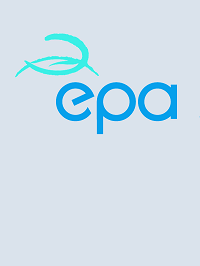Eutrophication from Agricultural Sources - Field- and Catchment-Scale Risk Assessment
ERTDI Report 79 (Magette et al.)
Summary: Synthesis Report for the project: 2000-LS-2.2.1-M2. Authors: W. Magette, R. Hallissey, K. Hughes, E. Cosgrove

Ambient monitoring of Ireland’s water resources has identified an increase in the numbers of rivers and lakes considered to be slightly or moderately polluted. The contamination of surface waters by diffuse pollution is particularly insidious. In its recent assessment of environmental quality, the Environmental Protection Agency (EPA) determined that phosphorus (P) from agricultural sources accounts for over 70% of the total anthropogenic load to freshwaters in Ireland (EPA, 2004). As over-fertilisation of grassland is common in the Republic (EPA, 2004), this and other evidence suggests that a large proportion of the P loss to waters arising from agriculture is contributed by diffuse sources.
The European Union’s Water Framework Directive (WFD) (2000/60/EC) mandates a comprehensive approach to water management. Yet, diffuse nutrient pollution from the landscape is particularly difficult to identify, and even more difficult to control (Magette, 1998). Irvine et al. (2005a) observed that risk assessment was a fundamental element of the WFD. Hand-in-hand with risk assessment is identification of those situations likely to produce environmental hazards. It is broadly accepted that strategies to address diffuse pollution will be most effective when they are targeted towards sensitive source areas of nutrients in the landscape (Sharpley et al., 1993). It follows that a procedure is needed with which to identify these sensitive areas within catchments. Magette (1998) sought to develop such a procedure, specifically for grassland areas in Ireland, which make up approximately 90% of the utilisable agricultural area in the country.
This research was commissioned to further test, and modify as appropriate, the risk-ranking procedure proposed by Magette (1998). The primary focus of the research was to be on field-scale assessments of factors that, in combination, would suggest that an area posed a particular risk of losing nutrients (especially P) that would subsequently be transported to receiving waters. The project was further intended to complement other large-scale research being conducted under a comprehensive research programme funded by the EPA and co-ordinated by Teagasc as detailed in Eutrophication from Agricultural Sources: Models and Risk Assessment Schemes for Predicting Phosphorus Loss to Water (2000-LS-2.2.2-M2) Final Report (Daly, 2006). Magette’s (1998) original ranking procedure formed the starting point for this research. The overall study plan was to first critically analyse and test the procedure more intensively than previously had been possible, and then to modify the procedure to address any deficiencies identified during the critical analysis and testing phase. In practice, testing and modification were iterative processes. Because this project was not funded to collect data, the research was dependent on the supply of appropriate data from other sources. Most of the effort was placed on developing a procedure for assessing the potential risk (meaning the relative likelihood) of losing P from areas within a landscape, and the subsequent likelihood of that P being transported to adjacent water bodies. Ideally, these sources would have been field-sized areas, but due to the limited number of data sets available at this scale in Ireland (and indeed Northern Ireland and Britain), research was also conducted at the small-catchment scale, for which considerably more data were available. The use of catchment-scale data also facilitated the examination of factors affecting the transport of nutrients from sources to the adjacent water bodies.
The output from this research is complementary to that from other nutrient-loss modelling projects funded by the EPA through the ERTDI Programme 2000–2006, each of which sought to develop a methodology that could be used to assess the potential losses of P from the landscape to water (Daly, 2006; Nasr and Bruen, 2006). On the continuum from simple to complex assessment methods, the research reported herein represents a relatively simple procedure that can be readily used by catchment managers responsible for water-quality protection and, indeed, by agricultural advisors responsible for promoting best agricultural practice with regard to nutrient management.